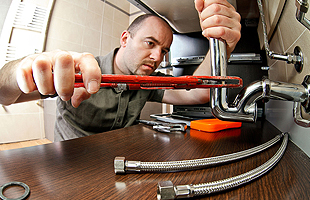When a home is in an area that has poor drainage and that allows water from rain or snow melt to sit around your basement walls you have a recipe for disaster if you aren’t using flood prevention options. Over time the water will find its way inside, leaving you with a flooded basement and, over time, a potential for a foundation collapse as the concrete or building material becomes water soaked and begins to rot.
In addition to foundation issues without flood prevention in place water soaks your foundation, carpets and furniture season after season. This creates a perfect breeding ground for molds, mildews and fungus that are all potential health risks for you and your family.
Sump Pumps to the Rescue
The most common option for flood prevention for this type of problem is the installation of a sump pump. There are different types of sump pumps that can be installed either during construction or after. A submersible sump pump is below the level of your basement floor, often significantly, and it is in a hollow tube or casing and covered with a lid.
How Flood Prevention Pumps Work
The pump has a float valve that turns the pump on when the water reaches a specific level and then, when the off when the float valve goes back to a specific level. The power source for the pump is located in the basement, typically right beside the pump housing, away from any possible flooding.
The other type of flood prevention sump pump is called a pedestal style. It works similar to the submersible but the actual motor is above the pump on a rod. Both types of pumps can be connected to a battery backup system to ensure that they will work even if the power goes out.
This type of flood prevention ensures that when the water in the sump pump chamber, known as the crock, reaches a certain level the pump kicks in and pumps the water through drainage pipes out and away from the home through a length of hose or pipe. It is important to make sure this discharge hose or pipe is large enough and long enough to move the water away so it doesn’t end up draining back into your basement.
Let our professionals help you with a flood prevention plan that is right for your home and property. To learn more go to Apexplumbingchicago.com.



